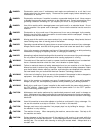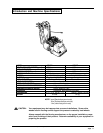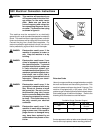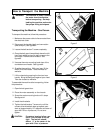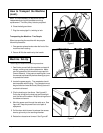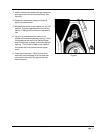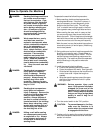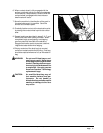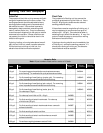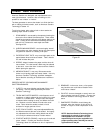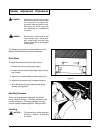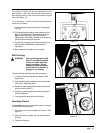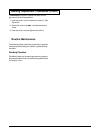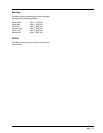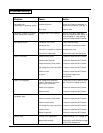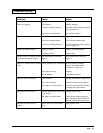
Page 12 AMERICAN SANDERS TECHNOLOGY Apollo 8 Operator's Manual
Sanding Cuts and Sandpaper
Initial Cut
The purpose of the initial cut is to remove old finish
and gross imperfections on the floor surface. The
sanding equipment should be adjusted to heavy
sanding pressure setting and a coarse abrasive
belt should be used. If the surface is severely
damaged by deep scratches, preexisting dwell
marks, uneven planks, etc., it may be necessary
to sand across or diagonally to the grain to restore
evenness to the surface. If these conditions are
not present, the initial cut should be done in the
direction of the grain.
If glazing, loading, or burning takes place immedi-
ately into an initial cut, select a coarser abrasive.
If this should occur during an initial cut, the
abrasive has dulled and must be replaced.
Grain Use
16 grit For removing gross imperfections and restore evenness - 945844 -
to old flooring. To remove build-up of paints and varnishes.
36 grit For first sanding of new flooring (maple, oak). For removing - 945842 945901
minor imperfections and finishes from old flooring.
40 grit For first sanding of new flooring (oak, walnut). For removing - 945841 945902
minor imperfections and finishes from old flooring.
50 grit For first sanding of new flooring (cedar, pine, fir) - 945840 945903
For cleanup of 16 grit.
60 grit For cleanup from initial cut 36 - 40 grit. 945839 - 945904
80 grit For final sanding of certain hardwoods. For cleanup 945838 - 945905
of initial cuts (50 grit).
100 grit For final sanding of certain hardwoods where a smooth 945837 - 945909
surface is desired.
120 grit For final sanding of certain conifers. 945836 - 945910
150 grit For final sanding of certain conifers where a smooth 945835 - 945911
surface is desired.
180 grit For surface roughing between coats of finish. 945834 - -
Abrasive Belts
Note: All part numbers listed are for a carton of 10 belts
Aluminum Silicon Ceramic
Oxide Carbide Alum.Oxide
Final Cuts
The purpose of a finishing cut is to remove the
scratches produced during the initial cut. Use a
fine (60 - 80 grit) grain abrasive and a reduced
sanding pressure setting.
If the surface remains rough after a finishing cut, it
may be necessary to use an even finer grain of
abrasive (80 - 100 grit). Care should be taken in
selecting the grit size of the abrasive. A very fine
grain will close the pores on a wood floor making
admission of a stain difficult.
If glazing or burning should occur immediately into
a finishing cut, reduce the sanding pressure. If it
should occur during a finishing cut, the abrasive
has dulled and must be replaced.



